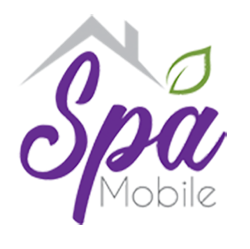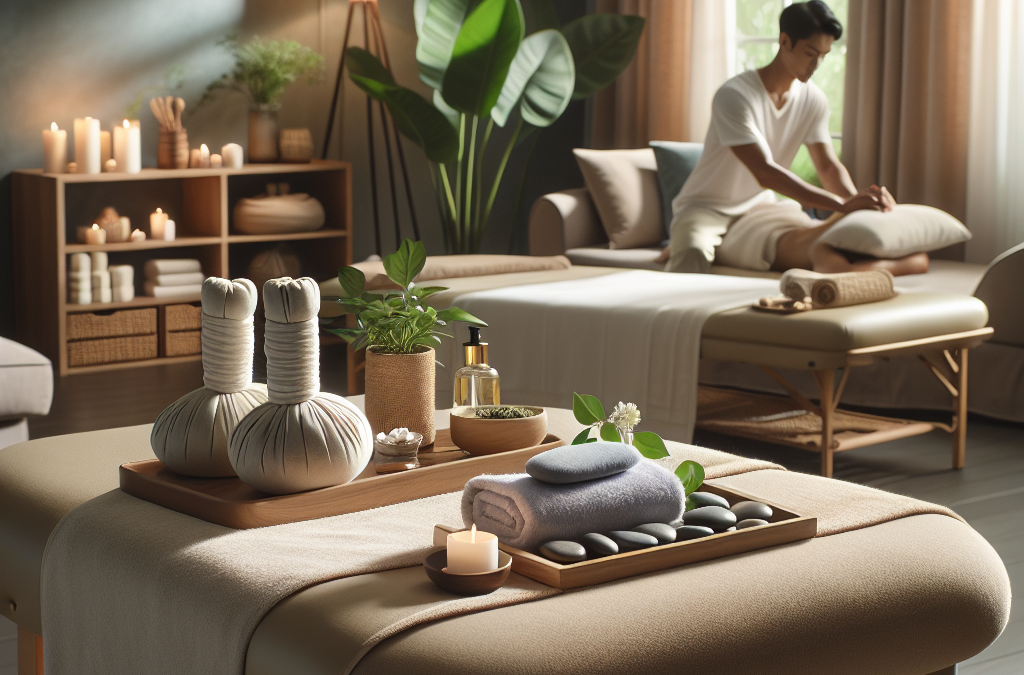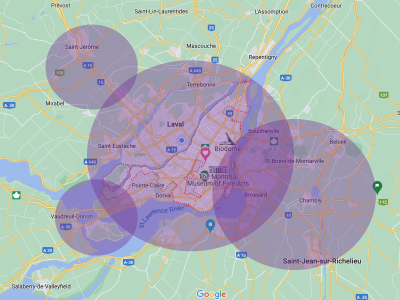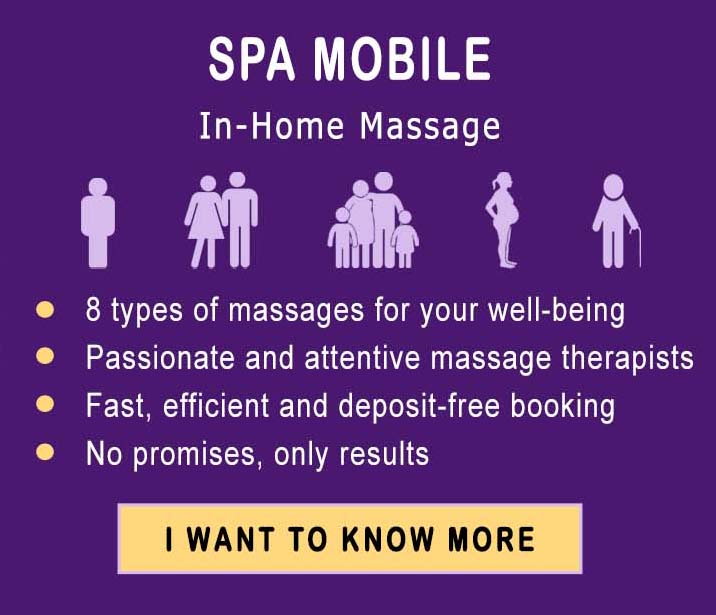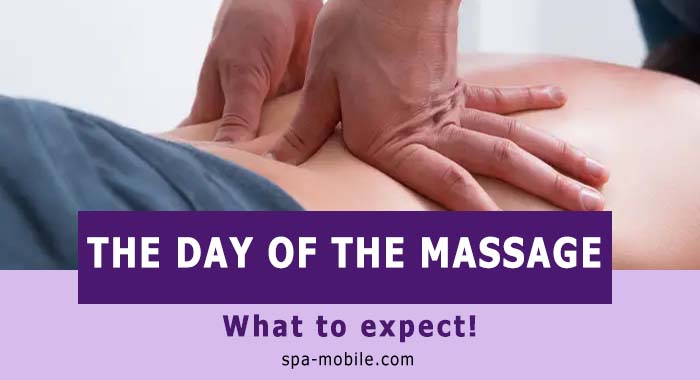Massage therapy has been utilized for centuries as a natural way to promote relaxation, reduce stress, and relieve muscle tension. In recent years, the convenience and benefits of in-home massage therapy have become increasingly popular. With busy schedules and hectic lifestyles, more people are seeking ways to relax and rejuvenate without having to leave the comfort of their own home.
What is In-Home Massage Therapy?
In-home massage therapy involves a licensed massage therapist coming to your home to perform a massage session. This eliminates the need to travel to a spa or massage clinic, saving you time and reducing stress. In-home massage therapy sessions can be customized to meet your individual needs and preferences, allowing you to enjoy a personalized experience in a familiar and comfortable environment.
The Benefits of In-Home Massage Therapy
1. Convenience
One of the primary benefits of in-home massage therapy is the convenience it offers. Instead of having to drive to a spa or massage clinic, you can simply relax in the comfort of your own home and let the massage therapist come to you. This eliminates the need for travel time and allows you to enjoy a relaxing massage without having to leave your house.
2. Comfort
Being in your own home provides a sense of comfort and familiarity that can enhance the overall massage experience. You can choose a quiet and peaceful space in your home for the massage session, allowing you to fully relax and unwind without any distractions. In-home massage therapy allows you to create a soothing atmosphere that promotes relaxation and healing.
3. Personalized Experience
In-home massage therapy sessions can be customized to meet your specific needs and preferences. The massage therapist can tailor the treatment to focus on areas of tension or discomfort, incorporating techniques that provide the most benefit for your individual needs. This personalized approach allows you to receive a massage that is tailored to your body and preferences, ensuring a more effective and enjoyable experience.
4. Time-Saving
With in-home massage therapy, you can save time by eliminating the need to travel to and from a spa or massage clinic. This can be especially beneficial for those with busy schedules or limited availability, allowing you to enjoy a relaxing massage without having to sacrifice time for travel. In-home massage therapy provides the convenience of scheduling a massage at a time that works best for you, helping you to make self-care a priority in your busy life.
5. Stress Reduction
Massage therapy is well-known for its ability to reduce stress and promote relaxation. By receiving a massage in the comfort of your own home, you can further enhance the stress-relieving benefits of the treatment. Being in a familiar environment can help you feel more at ease and relaxed, allowing you to fully unwind and let go of any built-up tension or anxiety. In-home massage therapy provides a tranquil and soothing atmosphere that promotes a sense of calm and well-being.
Types of In-Home Massage Therapy
There are a variety of different types of massage therapy that can be provided in the comfort of your own home. Some common types of in-home massage therapy include:
1. Swedish Massage
Swedish massage is a gentle and relaxing type of massage that focuses on promoting overall relaxation and easing muscle tension. This popular massage technique involves long, flowing strokes and kneading movements that help to improve circulation, reduce stress, and release tension in the muscles. Swedish massage is a versatile option that is suitable for individuals of all ages and levels of experience with massage therapy.
2. Deep Tissue Massage
Deep tissue massage is a more intense form of massage therapy that targets deep layers of muscle and connective tissue. This technique is designed to release chronic tension and tightness in the muscles, helping to alleviate pain and improve mobility. Deep tissue massage can be beneficial for individuals with chronic pain, sports injuries, or other musculoskeletal conditions that require deeper pressure to achieve optimal results.
3. Sports Massage
Sports massage is a specialized form of massage therapy that is designed to enhance athletic performance, prevent injury, and promote recovery. This type of massage focuses on specific muscle groups and areas of the body that are used during sports or physical activity. Sports massage can help to improve flexibility, reduce muscle soreness, and enhance overall physical health and well-being.
4. Aromatherapy Massage
Aromatherapy massage combines the benefits of massage therapy with the use of essential oils to promote relaxation and healing. This type of massage involves the use of scented oils that are applied to the skin or inhaled during the massage session. Aromatherapy massage can help to reduce stress, improve mood, and enhance overall well-being by stimulating the senses and promoting a sense of calm and relaxation.
5. Prenatal Massage
Prenatal massage is a gentle and nurturing type of massage therapy that is designed specifically for pregnant women. This type of massage helps to alleviate common pregnancy-related discomforts such as back pain, swelling, and fatigue. Prenatal massage can be a safe and effective way to promote relaxation and reduce stress during pregnancy, providing expectant mothers with much-needed relief and support.
How to Prepare for an In-Home Massage Therapy Session
Before your in-home massage therapy session, there are a few steps you can take to ensure that you have a comfortable and enjoyable experience:
1. Choose a Quiet and Relaxing Space
Select a quiet and peaceful space in your home where you can relax during the massage session. Make sure the area is free of distractions and noise, allowing you to fully unwind and enjoy the benefits of the treatment.
2. Communicate Your Needs and Preferences
Communicate with your massage therapist about any specific areas of tension or discomfort that you would like them to focus on during the session. Share any preferences you have for pressure, techniques, or aromatherapy oils to ensure that the massage is tailored to your individual needs.
3. Prepare for the Massage Session
Before the massage therapist arrives, gather any necessary supplies such as towels, blankets, or pillows to enhance your comfort during the session. You may also want to have a bottle of water nearby to stay hydrated and aid in the detoxification process that can occur during massage therapy.
4. Relax and Unwind
Take some time to relax and unwind before the massage therapist arrives, allowing yourself to mentally prepare for the treatment. Take a few deep breaths, listen to calming music, or engage in a brief meditation to help clear your mind and set a positive intention for the massage session.
The Healing Benefits of In-Home Massage Therapy
In addition to promoting relaxation and reducing stress, in-home massage therapy offers a variety of healing benefits for the body and mind. Some of the key healing benefits of in-home massage therapy include:
1. Pain Relief
Massage therapy can help to alleviate pain and discomfort caused by muscle tension, injuries, or chronic conditions. By targeting specific areas of the body with massage techniques, you can reduce inflammation, improve circulation, and release tension that may be contributing to pain or discomfort. In-home massage therapy provides a safe and effective way to manage pain and promote healing without the need for medication or invasive procedures.
2. Improved Circulation
Massage therapy can help to improve circulation throughout the body, enhancing the delivery of oxygen and nutrients to muscles and tissues. By stimulating blood flow, massage therapy can speed up the healing process, reduce inflammation, and promote overall health and well-being. In-home massage therapy can be particularly beneficial for individuals with circulation issues or conditions that affect blood flow, such as diabetes or high blood pressure.
3. Stress Reduction
Stress is a common factor in many health conditions and can have a significant impact on overall well-being. In-home massage therapy provides a natural and effective way to reduce stress and promote relaxation, helping to improve mood, sleep, and immune function. By releasing tension in the muscles and calming the nervous system, massage therapy can help to lower cortisol levels and promote a sense of calm and well-being.
4. Muscle Recovery
For active individuals or athletes, in-home massage therapy can help to promote muscle recovery and reduce the risk of injury. By targeting specific muscle groups and using techniques such as sports massage or deep tissue massage, a massage therapist can help to alleviate soreness, improve flexibility, and enhance performance. In-home massage therapy can be a valuable tool for promoting physical health and well-being for individuals of all fitness levels.
5. Emotional Healing
Massage therapy has the ability to promote emotional healing and improve mental health by reducing anxiety, depression, and other mood disorders. In-home massage therapy provides a safe and nurturing environment for individuals to relax, unwind, and release emotional tension and trauma. By promoting a sense of calm and relaxation, massage therapy can help to improve emotional well-being and overall quality of life.
Conclusion
In-home massage therapy offers a convenient and effective way to promote relaxation and healing in the comfort of your own home. With a variety of massage techniques to choose from and the ability to customize your experience, in-home massage therapy provides a personalized and stress-free approach to self-care. Whether you are looking to reduce stress, alleviate pain, or improve overall well-being, in-home massage therapy can help you achieve your health and wellness goals with ease and convenience.
